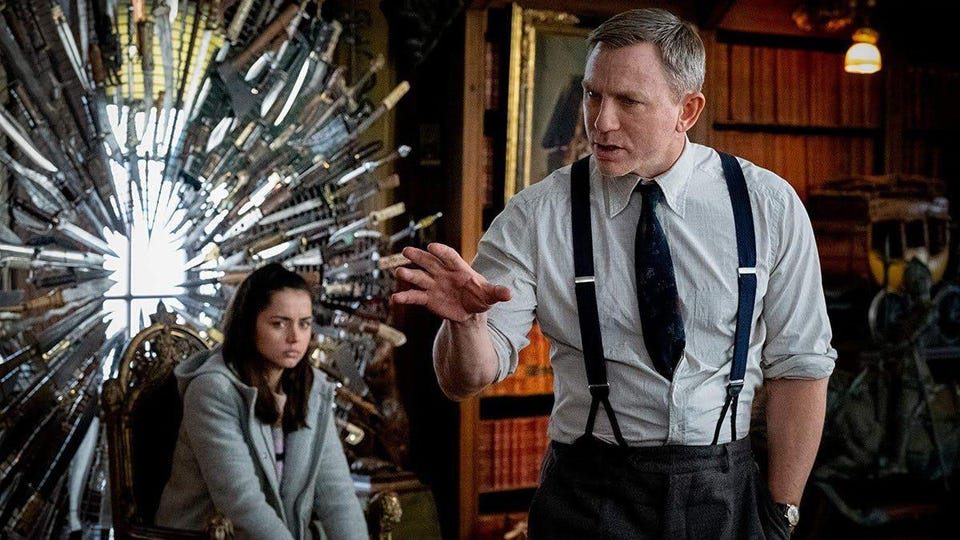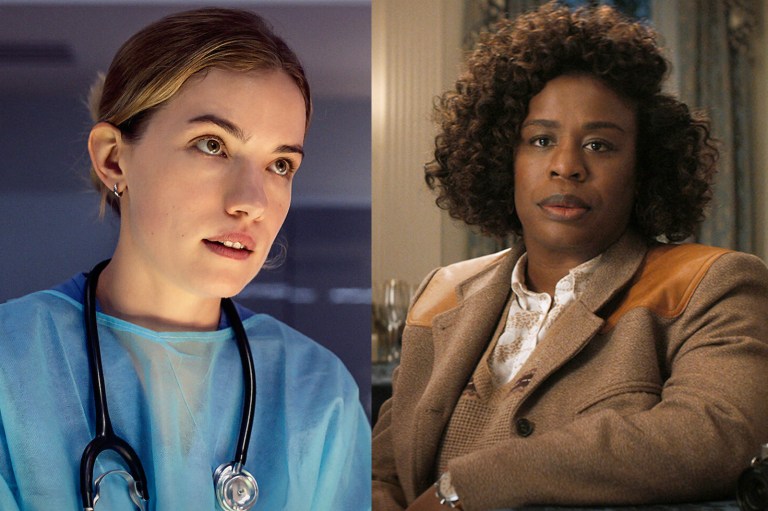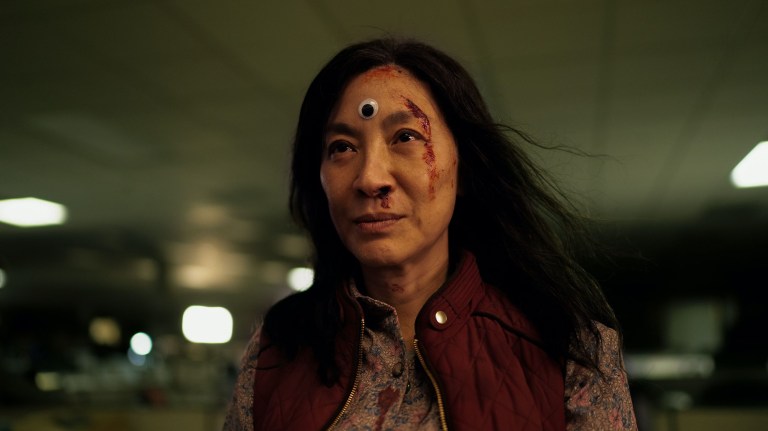
Peeling Back The “Glass Onion: A Knives Out Mystery”
Writer and Director Rian Johnson has once again reinvigorated the sparsely populated murder mystery genre with his latest installment of the Benoit Blanc franchise.
The biggest problem with the Knives Out films is that we as an audience have to wait too long between chapters. With broad influences from the collective works of Agatha Christie to films like Murder By Death, Clue, and The Thin Man; Johnson brings a much needed dose of modernity and comedy to his brand.
Glass Onion is in many ways, a classic murder mystery. It is only intriguing to watch if the setting is exotic and the participants are wealthy. In the movie world, poor people just don’t get renown detectives on their cases. To that point the film leans into the absurdity of its wealth and location. The Glass Onion itself is a new monied, wet dream. It’s the name of a compound on a private Greek island, that is all things tech bro meets bond villain. The island is owned by Miles Bron; an app billionaire who flaunts his money and buys personality through overpriced pop art and unnecessarily gaudy innovation. The island and mansion that the film primarily take place in, play as much of a part in the story as any cast member.
The initial hook of the film is mildly intriguing as a handful of seemingly unconnected elites receive mystery boxes containing elaborate puzzles that ultimately invite them to an annual gathering. While the setup is novel, the numerous puzzles are all solved too quickly and without audience participation. At this early point the film nearly loses its audience until Janelle Monae shows up and takes a hammer to her box to open it. She’s a great representation of the film itself; taking predictable puzzle solving story and smashing it to pull the audience in.
The invitations inside the aforementioned boxes are specifically for a group known as the “disruptors”. A once poor, collection of aspiring business persons who have all succeeded and now assemble once a year at the behest of their wealthiest friend, billionaire Miles. This year’s gathering is special. He is throwing a murder mystery weekend event where Miles’ friends will have to figure out who killed him in a very elaborate and expensively designed party game that only stupid money could buy.
Five invitations are sent out, yet six guests (aside from a girlfriend and personal assistant) arrive. The extra invitee is the world’s greatest detective Benoit Blanc, who has somehow also received a boxed puzzle, despite Miles specifically creating only five. Why is Blanc there and who invited him? Will there be an actual murder or is this part of a rich man’s game?
It’s a solid setup that is not afraid to poke fun at itself. It constantly treads between vintage ageless detective story and modern celebrity influencer culture, dropping names and fake brands like Jared Leto’s hard kombucha, a boat dock designed by Banksy, and a never overused Jeremy Renner’s hot sauce.
Without unraveling the yarn and giving away the twists of the film, (which is the point of watching any whodunnit) let’s break down what worked and didn’t.
The characters of this iteration of Knives Out feel less developed than the previous installment. Much improved is Daniel Craig as Benoit Blanc who has a firmer grasp on his southern draw and somehow works far better this time as a young man acting like an elderly gentleman, a generation his senior. Whether he swims in a full suit or wears a neck kerchief like a frail octogenarian despite being obviously jacked, it plays well with his character and flows seamlessly. Blanc is more than the glue of the film, he is the comedic beat and pacing that provide the baseline for the franchise. On this memorable character alone, we can see why Netflix has purchased multiple installments. Critics like to justifiably give Craig the Foghorn Leghorn stigma but say what you want, it’s successful. He’s captivating and likable.
Equally memorable is Ed Norton as Miles Bron. Whether it’s the brilliance of Norton’s acting or the fact that you’ll rarely heard a kind word spoken of him in Hollywood circles, he plays a great antagonist. Everyone on screen and in the audience is dying to punch him square in the face in every scene. Is he even acting or did he just show up and start riffing? With Norton’s depth of skill it is often hard to tell, but likewise he plays a brilliant part in the film as the out of touch, self righteous and obliviously rich douche.
The brightest star in this film is that of Janelle Monae. Not only is her character easily the most developed but she carries the second act nearly on her own as the plot takes a hard twist and pulls the viewer directly out of the storyline. While this is the slowest part of the film that should have been trimmed down, Monae gives her role depth and charisma to gracefully steal the entire midsection from Craig and become the most watchable member of the ensemble.
Unfortunately, the other cast members with their usual on screen personalities are not allowed to shine here. Their talents are all but wasted in Glass Onion. Katherine Hahn as a hungry and desperate politician has very little comedic wallop and one liners other than reactive expressions. Dave Bautista as an über macho social media influencer also gets few punchlines and is more of a physical presence as is his girlfriend Whiskey, played by Madelyn Cline.
Tony and Grammy winner Leslie Odom Jr. skillset is completely boxed in as a scientist with little dialogue and even less motive to be on the island as one of the “disruptors”. The only other actor given moments to flex was Kate Hudson who plays a politically incorrect ditz and leisurewear millionaire. The continuing fun of the film’s plot makes her part work as it pokes fake fun at her real world brand, Fabletics and channels her Goldie Hawn genetics to be quite likable even in her horridness.
In defense of Rian Johnson, it is not easy to have a paced, three act mystery while also giving enough backstory and screen time to eight distinctly different characters. That said, the move is more than long enough to have done that and the on screen talent aside from Craig, Norton, and Monae was present but ultimately unused.
What is very appreciated is the look and overall direction of this film. The set design and coloring of Glass Onion are excellent. They bring the crisp, modern freshness of cutting edge technology and wealth to the few rooms and set pieces where the majority of the film take place. They keep the film bright and sexy as do the vivid costuming of the characters, enough for this to feel like a romantic throwback despite being present day. Kudos to the art department and costume designer. Whether its the hilarious vibrant artwork, beautiful wardrobe, or stylish modernity of the Onion itself, the look of this film is absolute eye candy. Reds pop, everyone is glowing and there isn’t anything that isn’t passionately illuminated.
Ultimately, the twists and turns of Glass Onion deliver as they should. The audience is involved immediately and are all expected to take their guesses as to who did what and why. There are non linear breaks in the film that do slow it down but give it some extra depth and backstory that bolster the final act for a satisfying reveal. The climax has a poppy kick and certainly pays off far better than that of the remake of “Murder on the Orient Express” or “Death On the Nile”. While the big twist isn’t quite on the level as that of the first Knives Out, it is good fun and delivers with far greater energy than that of its predecessor.
Many will call this a run of the mill murder mystery that might be ultimately forgotten in decades to come, but we must look at it through the lens of being created to be nearly free for viewers on Netflix. In that regard I absolutely applaud it. For the ability to plug in, be engrossed and entertained with something different for a few hours, I hope Netflix green lights a dozen more of these. Benoit Blanc is good fun and these mystery films are water cooler murder meets pandemic escapism at its best. Thanks Rian and keep em’ coming.











